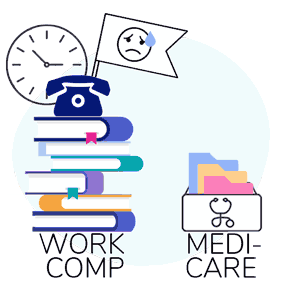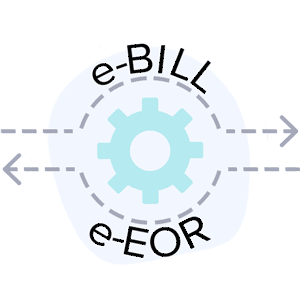New! Penalty & Interest Added to Claims Admin Directory
.gif)
Penalties and interest for untimely paid workers’ comp bills are not well-enforced in California — but daisyBill is keeping score.
Our free Claims Administrator Directory, which provides important information and data for claims administrators billed by daisyBill clients, now exposes exactly how much each claims administrator owed (and largely still owes) daisyBill providers in penalty and interest payments.
In California, penalty and interest requirement for claims administrators is fatally flawed, for two reasons:
- It’s completely unenforceable by providers (arguably by design), and
- (Until now) there was no verifiable data exposing how rarely claims administrators remit penalty and interest payments as required by California law.
With the big data provided by e-billing, daisyBill exposes the amount of unpaid penalty and interest owed to our clients — and presumably to most other providers across the state. The hard numbers tell a sad story about the consequences of an unenforceable, self-executing system of penalties for late payment.
Read on to see the almost unbelievable amounts of revenue owed to providers.
Claims Administrator Directory: Penalty & Interest Data
To see how much a given claims administrator owes in penalty and interest payments, simply head to daisyBill’s Claims Administrator Directory.
For many claims administrators, the Directory lists penalty and interest payments owed to daisyBill clients for 2019, 2020, 2021, and 2022 to date. For example, see the data on our largest claims administrator by bill volume, Sedgwick. (Coming soon: penalty and interest data on all California claims administrators).
As our data reveal, Sedgwick has over $2 million worth of catching up to do before the Third-Party Administrator (TPA) is square with our providers. That’s largely because penalty and interest payments are “self-executing” (a laughable concept explained further below).
The Claims Administrator Directory further breaks down penalty and interest liability for each claims administrator as follows:
- Bill Count: Total number of bills submitted by daisyBill providers
- EOR Receipt Count: Total number of bills for which daisyBill received an electronic EOR, or the client posted reimbursement information from a non-electronic EOR
- EOR Missing Count: Total number of bills for which for which no EOR reimbursement information was posted
- Payment Late Count: Total number of bills for which the payment effective date exceeded the time allowed by California law
- Penalty Due: Total amount of penalties due for untimely payment; California law mandates a 15% “self-executing” penalty
- Interest Due: Total amount of interest payments due for untimely payment; California law mandates “self-executing” interest payments of 10% per annum, retroactive to the date the claims administrator received the bill
Why Penalty & Interest Remains Mostly Unpaid
In California, for non-government employers, penalty and interest payments apply 45 days after the claims administrator receives a workers’ comp medical bill (for government employers, penalties and interest apply after 60 days).
For late payments, the claims administrator owes the provider a 15% penalty and 10% interest per annum, retroactive to the date the claims administrator (or its clearinghouse) received the bill.
There’s one huge problem, however.
The Division of Workers’ Compensation (DWC) Medical Billing and Payment Guide establishes penalty and interest payments as “self-executing.” In other words, claims administrators are on the honor system, trusted to pay simply because it’s the right thing to do (try reading that aloud with a straight face).
As our data show, claims administrators owe millions to daisyBill provider clients alone — and almost certainly millions upon millions more to non-daisyBill providers across the state.
Given the massive amounts owed for failure to timely pay providers’ bills, one can’t help but wonder: would actually enforcing the consequences lead claims administrators to conclude that it’s cheaper just to pay on time?
Protect your practice revenue. Harness the power of daisyBill software, data, and expertise for faster, better workers’ comp billing.
SCHEDULE A DEMO
DaisyBill provides content as an insightful service to its readers and clients. It does not offer legal advice and cannot guarantee the accuracy or suitability of its content for a particular purpose.




